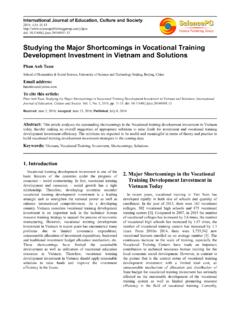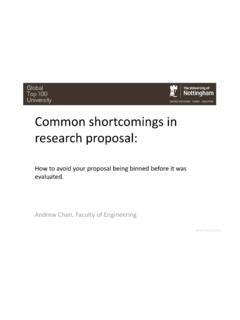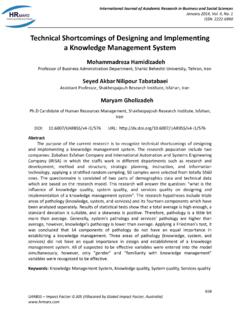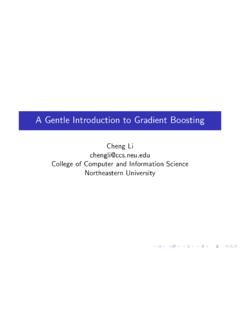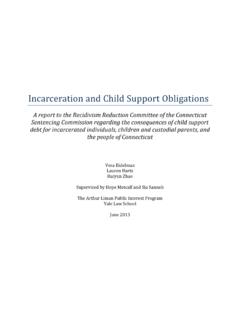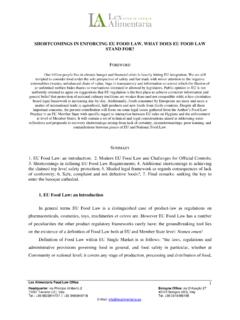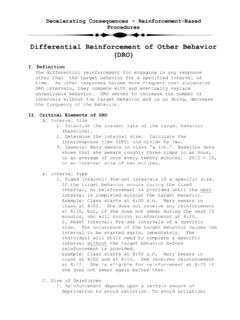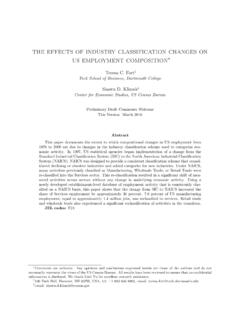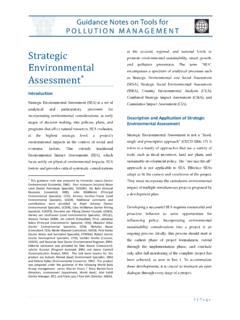Transcription of the project for The Problems with LEED - Lean Urbanism
1 The project forPOSITION Problems with LEEDPOSITION PAPERRent-SeekingThe self-serving behaviors identified in the analysis may best be described as rent-seeking behaviors. Rent-seeking occurs when people try to obtain benefits for themselves through political methods rather than wealth creation. Methods include such measures as getting a subsidy for a good they produce or by winning a special dispensation that hampers their compet-itors. Based on independent assessments of the growing stock of completed LEED projects, re-sults seem to suggest that most users of the pro-gram are drawn more to self-serving collateral benefits rather than to implementing methods that lead to measurable environmental improve-ments.
2 Rent-seeking is the unintended arena in which LEED finds and BackgroundLaunched in 1993 when Rick Fedrizzi, Mike Ital-iano, and David Gottfried got together in a pro-verbial garage to knock around ideas for raising awareness of environmental issues in building design, the group s worthy initiatives soon won support, grew more comprehensive and eventual-ly codified into LEED (Leadership in Energy and Environmental Design) standards in 1998. Today the US Green Building Council (USGBC), the non-profit consortium of building industry and environmental interests that administers LEED, is a large organization. It has grown from the humble garage in 1993 to an organization with more than 150 professional staff, 200 volunteers on 20 committees, and 20,000 members.
3 It col-lects millions of dollars in certification fees, not to mention in professional certification fees and in revenues from many other programs. More than 13,000 projects worldwide claim some level of LEED certification. LEED is well established as a global initiative with highly recognized and respected programs. LEED AchievementsLEED literature cites impressive achievements: LEED raises awareness of environmental is-sues by offering compelling rationales to users, to user clients, to user peers, and to the public at large that make users feel they are aiming for worthy environmental goals. LEED is a powerful tool because it offers multi-ple paths customized for a wide variety of project types.
4 LEED v4, rolled out in November 2013, adds six more project types, and does a better job integrating between LEED platforms. LEED is pervasive throughout the world. LEED causes large expensive projects that are inevitably going to be built to become more en-vironmentally sensitive. LEED draws attention to the benefits of reusing old buildings. Based on design work in architec-ture schools where LEED standards are integral, the high number of rehab projects submitted on review, which did not occur prior to LEED, sug-gests that a growing number of rehab projects will begin filling professional portfolios, which is a sorely absent piece of the architectural AssessmentsDespite cited achievements, and ignoring thinly veiled attacks by industries pushing their own pollut-er-friendly products, and by politicians pushing broad Analysis suggests LEED buildings perform no better, and in fact perform worse, than non-LEED buildings.
5 Many recommended actions, especially those selected by users, have little to no effect. Too few of its standards are results-driven, with high pay-back in areas other than environmental stewardship. Its rewards are self-serving, and used more often by a narrow group of elite users rather than a broad population. Recommendations include recognizing the shortcomings of current use characteristics, bringing clarity to the essentials of desired end performance, and refashioning certification standards to alter use of the PAPER IN PROGRESS2 LEAN Urbanism BRIEF | ThE Problems with LEED anti-environmentalist agendas, a number of credible and carefully researched critiques by non-competing parties testify to significant shortcomings of LEED.
6 As Kaid Benfield opined in his January 18, 2013 At-lantic Cities editorial titled, As Important As It Is, LEED Can Be So Embarrassing, Man, there are a lot of warts in this system. The obvious nature of the warts revealed in the studies makes it difficult to reconcile the rosy self-assessment by LEED with the less-flattering assessments painted by independent investiga-tions. Indeed, no less than the New York Times, the Wall Street Journal and National Public Radio among a host of others have run features, which shine glaring lights on negative assessments. The startling assessments generally confirm that, on average, LEED buildings perform worse than non-LEED August 30, 2009 feature in the New York Times titled, Some Buildings Not Living Up to Green Label, writer Mireya (Mia) Navarro highlights per-formance issues when she reports that the LEED certified Federal Building in Youngstown, OH could not score high enough in energy efficiency to qualify for the Energy Star label granted by the EPA.
7 Navar-ro goes on to write, The council s own research sug-gests that a quarter of the new buildings that have been certified do not save as much energy as their designs predicted and that most do not track energy consumption once in use. And the program has been under attack from architects, engineers and energy experts who argue that because building perfor-mance is not tracked, the certification may be falling short in reducing emissions tied to global warming. New York environmental consultant henry Gifford was so surprised by the poor perfor-mance of a LEED certified building of one of his clients that he investigated the source for LEED s claim of 25-30% reductions.
8 He was shocked by the small sampling of built projects (121 buildings volunteered by their owners) to support the claim and by lack of rigor used in calculations. when Gifford analyzed the same sampling, and applied appropriate rigor, re-sults indicated that the same buildings actually used 29% more energy than the most simi-lar buildings in the dataset that the study au-thors chose to use as a comparison! Gifford concluded, Going to so much trouble and ex-pense to end up with buildings that use more energy than comparable buildings is not only a tragedy, it is also a fraud perpetrated on US consumers trying their best to achieve true en-vironmental friendliness.
9 Incensed, Gifford filed a $100,000,000 lawsuit against LEED al-leging false advertising. Unfortunately, his suit was dismissed for not indicating how the adver-tising harmed him in order to gain standing as required by the Latham Act. Nonetheless, his findings are alarming, and are consistent with subsequent 2013 John Scofield, a physicist at Oberlin College, furnished a detailed study titled, A Re-examina-tion of the NBI LEED Building Energy Con-sumption Study. In the study Scofield examines more than 7,000 LEED certified buildings to test USGBC s claim that the extra cost of LEED certi-fication is more than compensated by 25-30% re-ductions in future energy and water use.
10 Scofield found no basis for this claim. his study establishes that, while some LEED buildings performed bet-ter, many non-LEED buildings performed better. On average the study finds, that the average energy consumption by LEED certified buildings is actual-ly higher than the corresponding average for the US commercial building stock. Although no studies yet single out buildings with the highest LEED-Platinum certification, anec-dotes trickle in about the poor performance of Platinum buildings on college campuses com-pared to older non-LEED stock, even though the Platinum buildings are designed by some of the most well-meaning and highly-regarded sus-tainability-accredited architects, such as hopkins Architects in the UK and Centerbrook Architects and Planners in the June 13, 2013 issue of USA Today featured an expose on LEED titled, In Building In-dustry, Is It Too Easy To Be Green?
